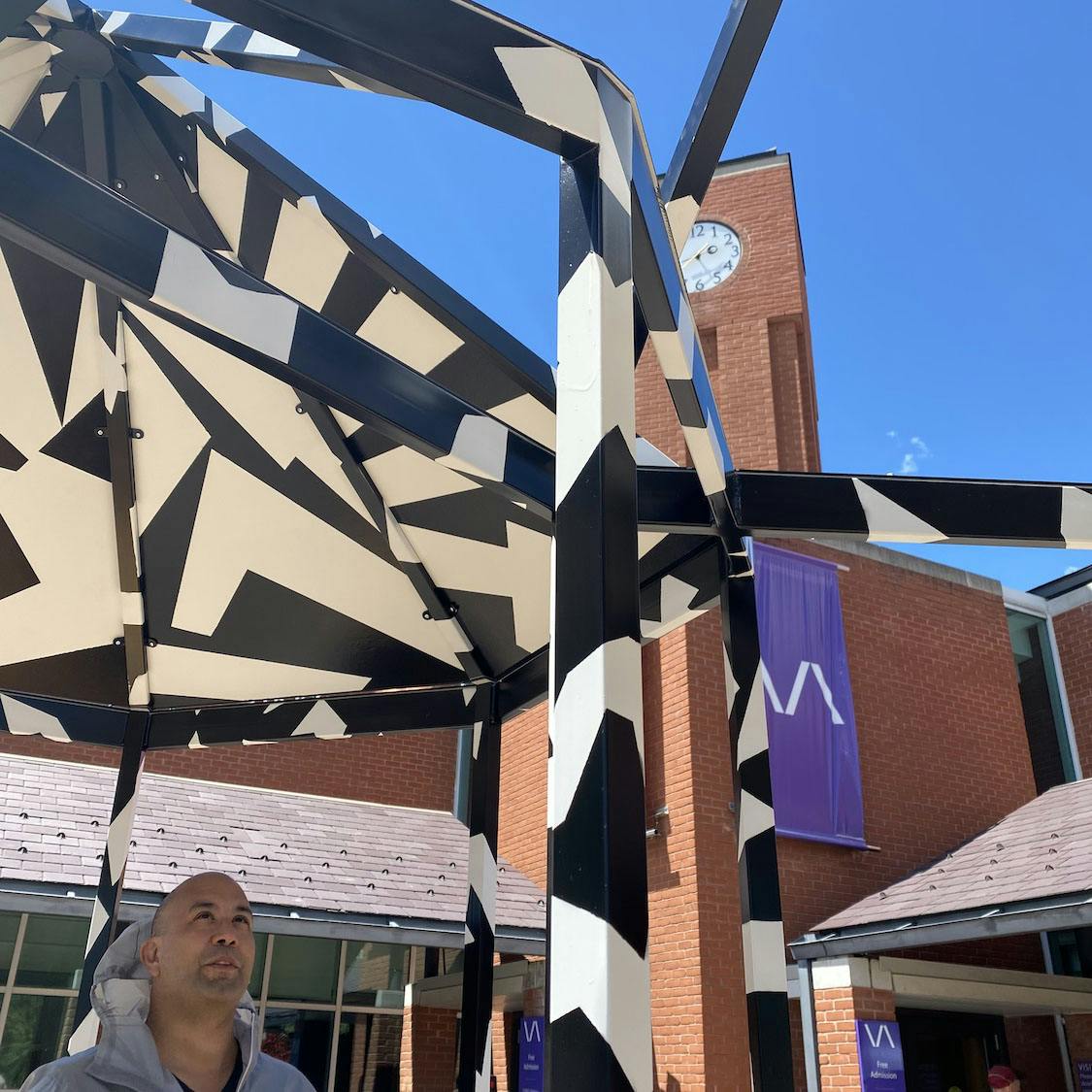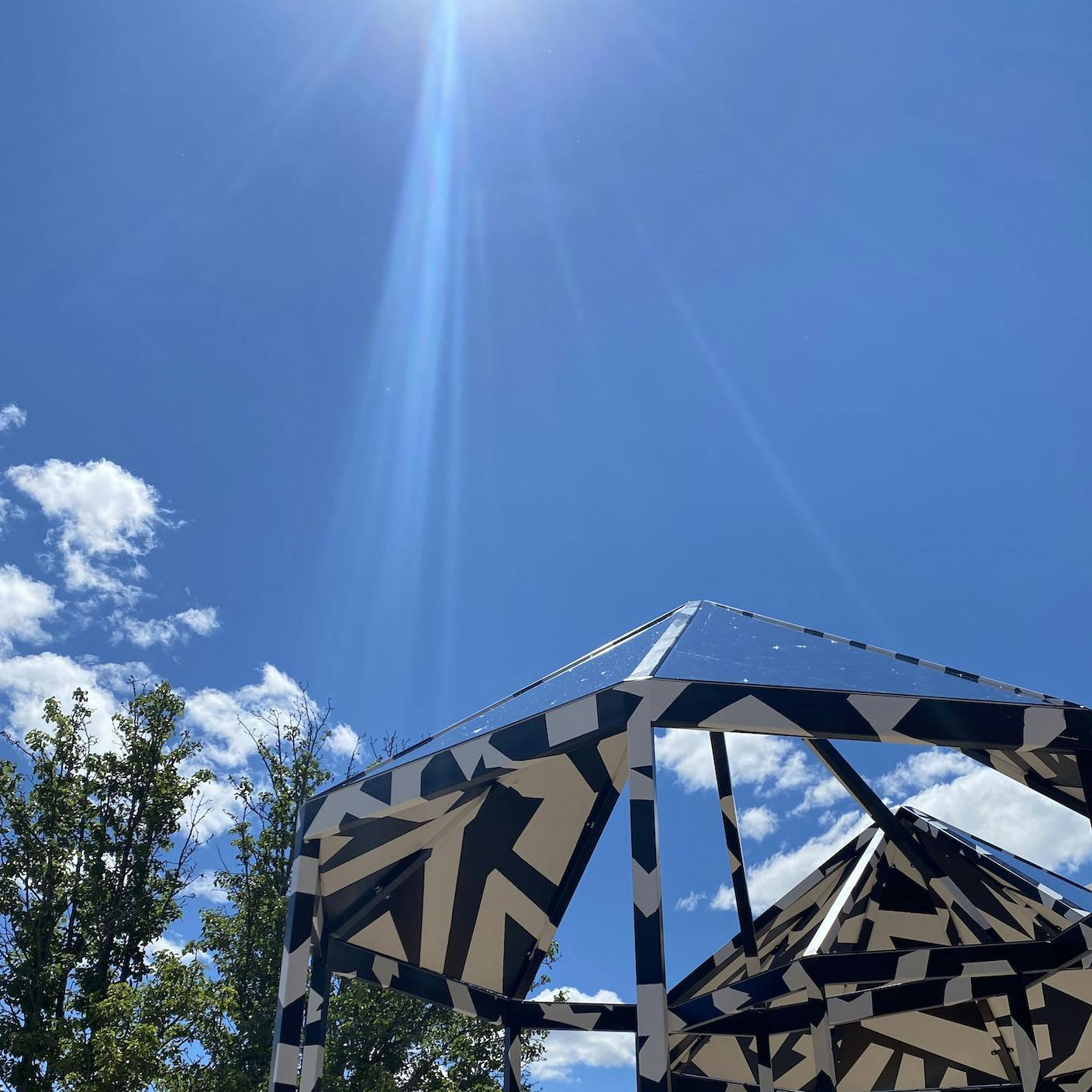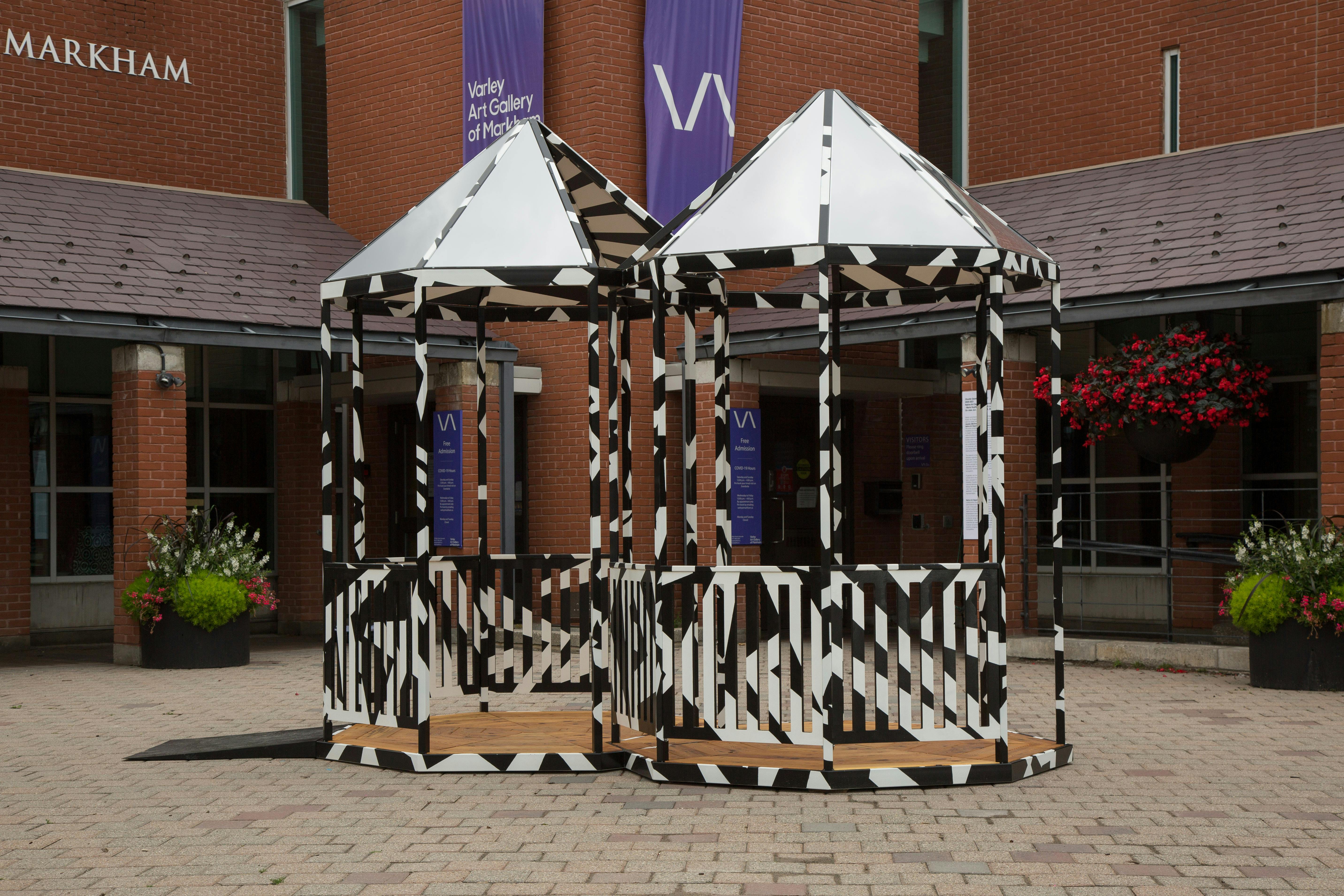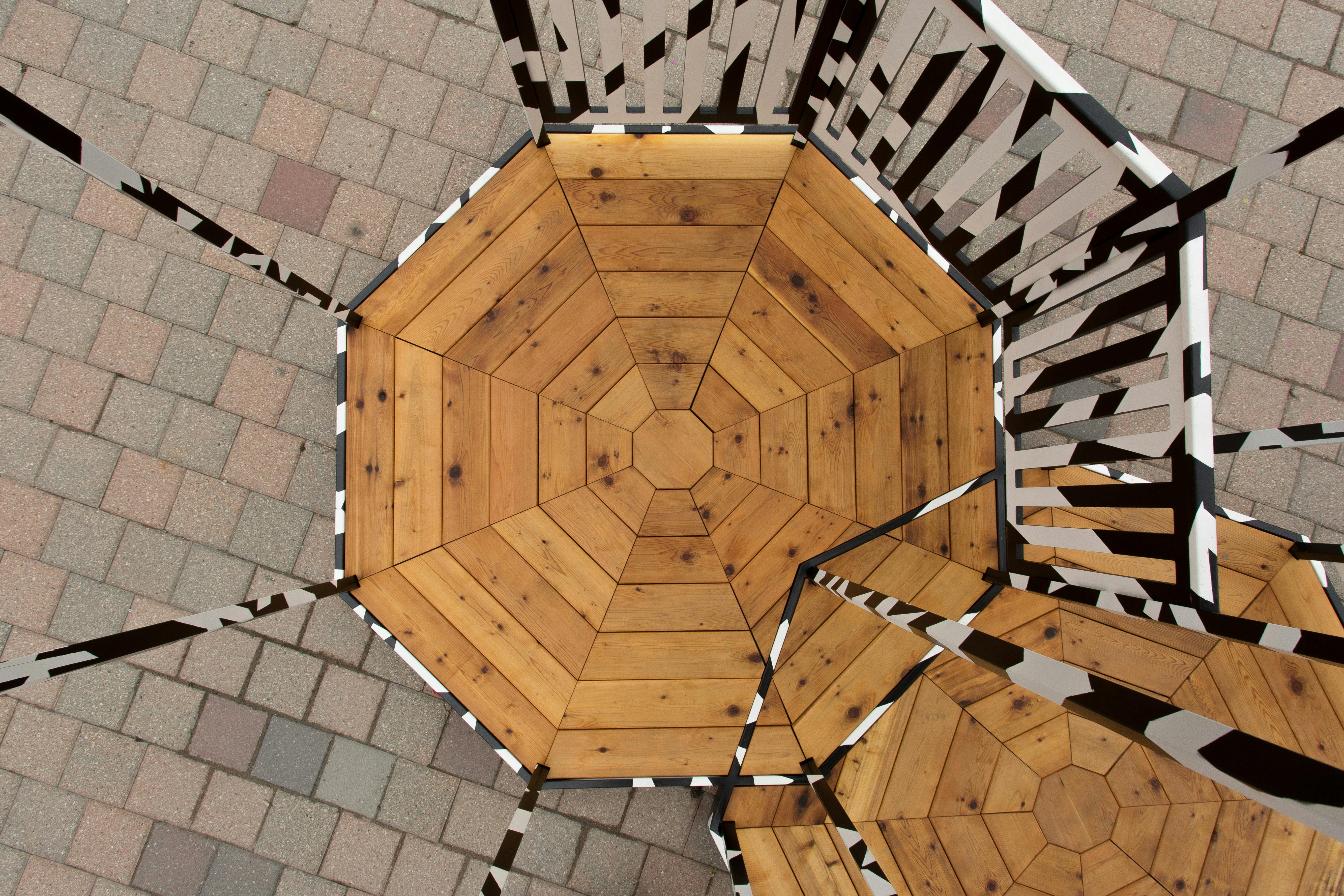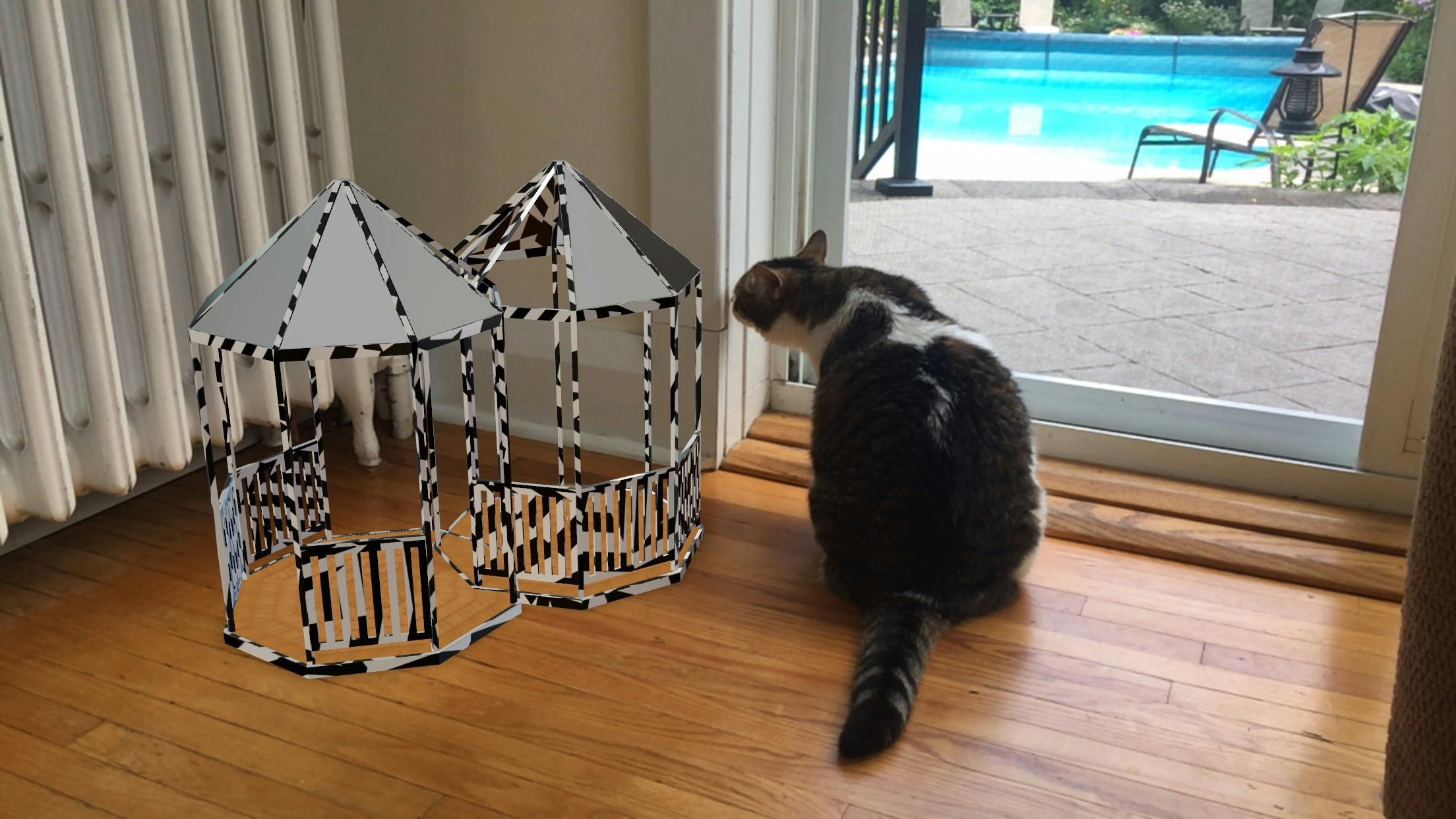Double Gazebo by Native Art Department International
Created by artist collective Native Art Department International (NADI), Double Gazebo (Markham) is a temporary public artwork newly commissioned by the City of Markham’s Public Art Program and presented in partnership with the Varley Art Gallery of Markham.
Now on view through November 28, 2021
Outdoor courtyard, Varley Art Gallery of Markham
216 Main Street Unionville, Markham
In parallel with the physical installation, NADI has also programmed a series of online activations titled Walk East for Sun Rise Walk West for Sunset. These five-part activations —With ARs, With Artists, With Movement, With Sound, With Star Knowledge—will be launched here on the first day of each month from July through November.
Double Gazebo comprises two intersected structures modeled on a traditional gazebo, and is 11 feet in height. The installation offers partial shelter while simultaneously acting as a platform for shared experiences and an awareness that our bodies exist in and occupy space. It is important to note that the paired structures presented here are understood to be intersected, not combined or conjoined, which emphasizes the fact that one cannot alter or remove one part without destroying the other.
The artwork is intended to reflect broader debates regarding social spaces of exchange, interaction, and land use. Using social spaces as a point of departure, Double Gazebo expands on the concept by constructing something that operates both as inside and outside, to foster an interaction between the concept of space and occupation.
A gazebo can be considered a rather conservative structure, but it is a familiar type, prevalent in the community in which one variant of it is installed. Double Gazebo intentionally disregards colonial definitions of what Indigenous art and design elements should look like. Instead, it calls into question the concept of "categorized aesthetic" in terms of both expression and self-representation.
Double Gazebo has two variants: Double Gazebo (Markham) , commissioned by the City of Markham’s Public Art Program and located at the outdoor courtyard of the Varley Art Gallery of Markham, on view now through November 28, 2021, and Double Gazebo (MOCA) that will be on view indoor at the Museum of Contemporary Art Toronto as part of MOCA’s inaugural triennial survey exhibition, the Greater Toronto Art 2021, from September 29, 2021 through January 9, 2022.
Designed for and informed by Double Gazebo, the intention of Walk East for Sun Rise Walk West for Sunset is multifold. Its online format is to address the related issues of social distancing and public art at this special time. Practically and metaphorically, it is to build a conceptual common ground that connects the installation’s two variants hosted at two places: Double Gazebo (Markham) and Double Gazebo (MOCA). Conceived to activate various architectural potentials of the installation—an open-ended platform for observation, reflection, experimentation, and action—through the contributions by a network of local collaborators, the program highlights the mandate of NADI’s operation—kinship, relationality, and non-competition.
July 1st
With AR (Markham)
Supported by ar-works
[With AR (MOCA) will be launched on September 29, 2021]
August 1st
With Artists
By Maria Hupfield and Jason Lujan of NADI
September 1st
With Movement
By Deanne Hupfield, Pow Wow Dancer
October 1st
With Sound
By Mark V. Campbell/DJ Grumps
November 1st
With Star Knowledge
By Dr. Hilding Neilson, Astronomer
Video documentation of the program are made by Markham and Shanghai based artist Liang Yue.





